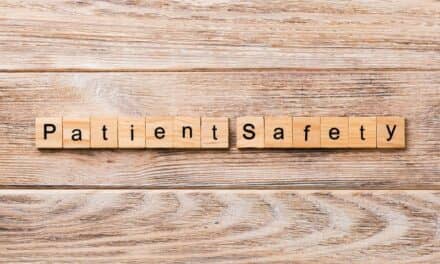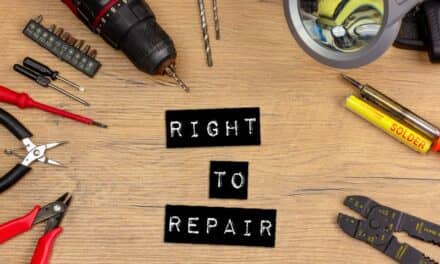The Critical Medical Infrastructure Right-to-Repair Act of 2020 stands to give HTM professionals more access to manufacturer data needed to repair medical devices. Some say that’s good; some say that’s bad.
By Melanie Hamilton-Basich
As HTM professionals, you must repair and maintain medical equipment so healthcare providers can properly treat patients. But those of you who work for a hospital or third-party organization know that if you don’t have all the resources needed to repair a device, you may not be able to get them easily from the original equipment manufacturer (OEM). Or you must wait for a tech from that company to arrive and service the equipment.
While this is not a new issue, the COVID-19 pandemic and accompanying widespread reports of broken ventilators have brought this tug-of-war to the forefront and made the wider public more aware of it. Recently proposed legislation would help resolve some of these issues, but only for the duration of the pandemic.
On August 6, a new bill was introduced by Sen. Ron Wyden (D-Ore.) and Rep. Yvette D. Clarke (D-N.Y.) in the House and Senate to advocate for the right to repair medical equipment during the COVID-19 pandemic: The Critical Medical Infrastructure Act of 2020.
According to its sponsors, the bill would:
- Protect equipment owners, lessees, and servicers from liability under federal copyright law for creating an incidental copy of service materials or for breaking a digital lock during the course of equipment repair in response to COVID-19
- Allow equipment owners or lessees to fabricate patented parts on a non-commercial basis and as needed for repair or maintenance in response to COVID-19
- Invalidate provisions in equipment contracts to the extent that they prohibit or restrict the repair or maintenance of critical medical infrastructure in response to COVID-19
- Require manufacturers to provide, on fair and reasonable terms, access to information and tools used to diagnose problems and service, maintain, or repair equipment
- Require the Federal Trade Commission to evaluate the bill’s impact and effectiveness on innovation and competition in the critical medical infrastructure market
The Fight Over Information
“People need to understand that the bill isn’t saying, no, vendors shouldn’t ever be able to repair the medical devices they’ve manufactured,” says Leticia Reynolds, a biomedical equipment technician who specializes in ventilator repair. “We’re hoping this bill will allow hospitals and other organizations to make the choice that’s best for them to support patient care, and to make sure they have readily available equipment.”
Reynolds is president of the Colorado Association of Biomedical Equipment Technicians (CABMET) and clinical engineering supervisor at Memorial Hospital-University of Colorado Health. She has repeatedly had trouble fixing ventilators during the COVID-19 pandemic. “While some manufacturers are stepping up and letting us get repair information, others are not,” she says. “We need this information on the ground to save lives in Colorado.”
But the issue is more nuanced than it may seem.
The Money Question
In addition to concerns about liability and patient safety, the manufacturer lobbying group the Medical Imaging & Technology Alliance (MITA) wants to protect its members’ interests and is staunchly against the bill passing, says Peter Weems, MITA’s senior director of policy and strategic operations. “In our view, it’s unsalvageable,” he says. “It amounts to a smash-and-grab by industry businesses seeking to exploit the pandemic to get competitors’ proprietary information.”
The concern appears to be that the data would be used by manufacturers’ competitors to develop similar products and make money off of them. As part of the bill, the FTC will, as stated above, evaluate the bill’s impact on medical device innovation and competition, which could help mitigate any ill effects to manufacturers that might occur. Of course, this would be after the fact, opponents say.
Gay Gordon-Byrne has a wholly different perspective. As executive director of The Repair Association, she has been campaigning for right-to-repair legislation for years, not just in the medical device community, but on behalf of all the association’s members in aftermarket repair industries. To her way of thinking, such concerns are unfounded.
First, she says, the information needed to fix a device is not the same as all of the schematics needed to actually manufacture it. She also believes any information that the bill would require be provided to HTM professionals is already being made available to the OEMs’ technicians, so it couldn’t be considered “trade secrets.”
To Gordon-Byrne, MITA’s opposition to the bill is more about controlling the revenue generated by the devices. “They make things to sell them, not because they want to fix them,” she claims of the OEMs. “We are interrupting a business model where for so long the hospitals didn’t have a choice. There was no competition for repair. Now the manufacturers are not happy. That divide is everywhere. It’s not specific to medical equipment.”
She points out that OEMs can determine what to charge for service contracts with hospitals and other businesses because their techs have the information needed to repair and run diagnostics on their devices.
Weems begs to differ. “Our objective is not to put anybody out of business,” he says, “just to make sure everybody is playing by the same rules.” He also stresses that the real issue has nothing to do with money. “We have never made any statements about money or finances,” he says. “Our position is that patient safety is the priority. And it’s best protected by servicers who are responsible actors, implementing quality control programs, filing medical device reports, and who have made themselves known to the FDA via registering.”
These are requirements that all OEMs must follow. Other companies that repair medical devices do not. Yet OEMs retain liability for the devices they manufacture, for the entire lifecycle of each device, regardless of who repairs them.
Currently, there are no plans to add such regulations. The FDA carried out a year-long study and concluded in its 2018 FDA Reauthorization Act of 2017 (FDARA) report that third-party independent service organizations “provide high-quality, safe, and effective servicing of medical devices.” If the FDA didn’t find any reason to require additional regulations of independent biomeds, Gordon-Byrne believes there is no reason to do so now.
Another factor is that most HTM professionals not working for medical device manufacturers are employed by hospitals, service organizations, clinics, and research labs. Gordon-Byrne contends that any biomed is already beholden to the standards of the place where he or she works. Hospitals, for example, are responsible to the Centers for Medicare & Medicaid Services, The Joint Commission, and National Fire Protection Association (NFPA) 99. And hospitals make medical device reports, so there is no need for biomeds to do so themselves, Gordon-Byrne says.
“Repair techs don’t show up at a hospital lobby and say, “Hey lady, can I fix your MRI?” Gordon-Byrne maintains. “These are very carefully arranged contracts, with lots of details negotiated. To say they’re not adequate with no proof strikes me as a little bit wrong. It’s the most regulated of all repair businesses.”
Reynolds disputes MITA’s characterization of biomeds as somehow unqualified to repair medical devices as well. The Association for the Advancement of Medical Instrumentation (AAMI) and regional associations like CABMET provide extensive ongoing training, and facilities like the hospital where Reynolds works have established training schedules to keep biomeds’ skills up to date. Such facilities also have quality control programs in place to ensure HTM professionals follow all necessary protocols, she says. The real issue, Reynolds emphasizes, is biomeds having access to the specific details about manufacturers’ particular pieces of equipment.
“I do think being in the field, I have a lot of knowledge, and I work with techs that have 30-plus years of knowledge,” says Reynolds. “We have the skills to do it. Just help us out.”
Unregulated Parts
When it comes to regulations for device parts, that’s a different issue. The bill would temporarily change federal law to allow HTM professionals to create plastic tubes and valves without being in violation of patent law, during the period of the pandemic.
“It would allow unregulated parties to fabricate their own parts for regulated devices. That’s scary,” says Weems. The proposed legislation does not require that biomeds “verify or validate” these parts or that they formally report that non-standard parts have been put into a medical device.
“There’s some truth to that,” Gordon-Byrne concedes. “But the medical community is very sensitive to that. Biomeds are operating in the best interests of the patient. If there is no tubing and someone needs to be intubated, they do what they have to do. True, it may not be approved by the FDA, but there’s a lot being used right now that’s not. It’s a pandemic.”
However, Gordon-Byrne believes relaxing such restrictions should be a permanent change, beyond the temporary effects of the bill if it passes. It would allow HTM professionals to buy tubing at a hardware store instead of buying it from an OEM at a much higher cost, she notes as an example.
“If this legislation passes, maybe it will help bring new clarity to the industry and make third-party servicers aware of what the line is between device repair and parts manufacturing so they can finally better recognize the consequences and take some responsibility for their actions,” Weems says.
Delays in Service
“This bill is very clearly a solution in search of a problem,” says Weems. “We have not heard any credible reports that medical devices have been going unserviced because of the pandemic. As far as we’re aware, our devices are up and running and serving patients all across the country.”
However, Reynolds disputes this claim. As CABMET president, she regularly hears from biomeds throughout Colorado. During the pandemic, “One vendor had only two ventilator technicians in the state supporting different regions, and one got sick,” she says. “So now you have one ventilator person for the entire state. And I’m sure they had an abundance of calls due to all the ventilators that were pulled out of service that people didn’t have literature for.”
Many other HTM professionals in Colorado have run into similar problems because they ended up with “weird” ventilators that they hadn’t been trained on and might have been missing parts, says Reynolds. If in-house biomeds had been given access to the ventilator manuals, they could have used their knowledge about ventilator repair to get the devices back in service quickly.
Particularly in rural areas, it could take quite a while for OEM technicians to make a service call. Once they do arrive, they might need to order parts, which will take more time. In these cases, many hospitals and other facilities want the option to have in-house biomeds service the devices themselves. Reynolds says another issue is that many manufacturers won’t allow facilities to purchase parts without a call for service, even if the issue is extremely minor.
Not that this is the case with all manufactures, she concedes. Some have been very helpful, Reynolds says, while others have told her, “Well, you haven’t been to school. Sorry. We can’t help you.”
“Really?” she emphasizes. “It’s broken.” Reynolds recently called an OEM to help her fix a ventilator that had just stopped working, but the company’s technician refused. Ironically, she then left to attend a training in how to repair that exact ventilator. “I found out that it could have been a 15-minute fix they could have walked me through beforehand,” Reynolds recalls. “Instead, the vent was down for a week because it waited until I came back from class.”
Reynolds acknowledges that OEM techs are still needed for certain repairs, and that hospitals and other healthcare facilities will continue to bring them in to service devices. Her emphasis is more on the less-nuanced quick fixes that can be especially important in an emergency situation, such as during the COVID-19 pandemic.
Hospitals should have choices and be able to determine which type of expertise is needed for any given situation, she stresses. It’s not that OEM techs are never needed, but that they’re not needed all the time.
The Cybersecurity Factor
One reason manufacturers cite for not sharing information about their devices is concern over maintaining cybersecurity.
“This bill doesn’t seem to recognize or appreciate cybersecurity concerns that might emerge with this legislation, if enacted,” says Weems. “Our medical imaging devices are driven by software, and it interfaces with other devices and healthcare facility systems. Creating situations where unregulated entities are operating software controls on a device creates concerns about cybersecurity for the device and everything else it connects to.”
Weems worries that because everything is so interconnected, a biomed introducing changes to a medical device to repair it would not just make the device itself vulnerable to cyberattacks. It could compromise all the equipment and data systems connected to the medical device being repaired, risking patient safety as well as patient privacy, he says.
“Cybersecurity is very important,” agrees Reynolds. But she has a different view of such concerns. “I think having the manual can aid biomeds in knowing how the system works so we’re doing everything appropriately to be able to ensure that we have the best cybersecurity.”
Gordon-Byrne contends that sharing information with biomeds, including security keys, is not going to cause problems. “The FTC held a big panel to discuss potential security issues, and the experts agreed at the end that medical device design for repair and cybersecurity are different things,” she says. “Either [a device] is cybersecure or it isn’t. Repairing it is not the way risks are introduced.”
Hope for the Future
The debate over who has the right to repair medical equipment will likely rage on for quite a while. It remains to be seen how much of an impact the Critical Medical Infrastructure Right-to-Repair Act of 2020, in particular, and the COVID-19 pandemic, in general, will have on the HTM profession.
For his part, MITA’s Weems says that regardless of what happens with the bill, “We want to continue to work with the FDA, Congress, and others, to implement policies that ensure safe and effective medical device service.”
Reynolds is hopeful that the bill will pass, and that it will lead to more permanent changes, but also that manufacturers and biomeds can come to more of an understanding. “I think, ultimately, we want the same thing,” she says. “We want what’s best for patient care.”
Melanie Hamilton-Basich is associate editor of 24×7 Magazine. Questions and comments can be directed to [email protected].






If you are an in-house department and an employee of the medical facility, you are then considered an owner of the purchased equipment and if you have negotiated into the price of the equipment, the proper training, you then should have a controlled access to allow proper preventive and most corrective maintenance.
To open this up to anyone and everyone is creating a substantial amount of liability and patient safety. By opening unlimited access to the technology manufactured today will start the delay in future technologies based upon the amount of research and engineering dollars that are invested in new products. Even the manufacturers own technicians can not work on their own products if their education is not validated. In today’s technology with the threats of cyber-security issues, stolen identities from PHI or EHR, the manufacturers are very reluctant to loosen their liability requirements to anyone else.
There is training available on products by certain independent training facilities that can give you a solid conceptual ability to diagnose and facilitate a certain amount of repairs. However, a large amount of technology today is password protected and requires manufacturers assistance and if they are not communicating with a trained technician that is familiar with the equipment and or trained on the product, they do not want the possibility of an inexperienced technician making an improper adjustment resulting in an improper outcome.
The issues raised by Larry Sheppard, above, completely ignore antitrust law. There aren’t any laws that support monopolies of parts, tools, training, or useful life. In fact the opposite is true. Manufacturers are not entitled to control repair just because they built the product. Antitrust law (when enforced) protects hospitals from being forced to buy something separate in order to continue to use the purchased item. Such as requirements to buy training in order to buy parts. Or limitations of hospital chosen employees to access essential safety and security updates to equipment without some additional payment. Limiting access to repair means limiting access to care — regardless of money.
Just another way big business and their lobbyists try to squash competent competition and small businesses from competing against them and lowering equipment ownership maintenance and service costs…..which could trickle down to lowering healthcare costs as a whole.
https://WWW.RAPIDXRAY.BIZ